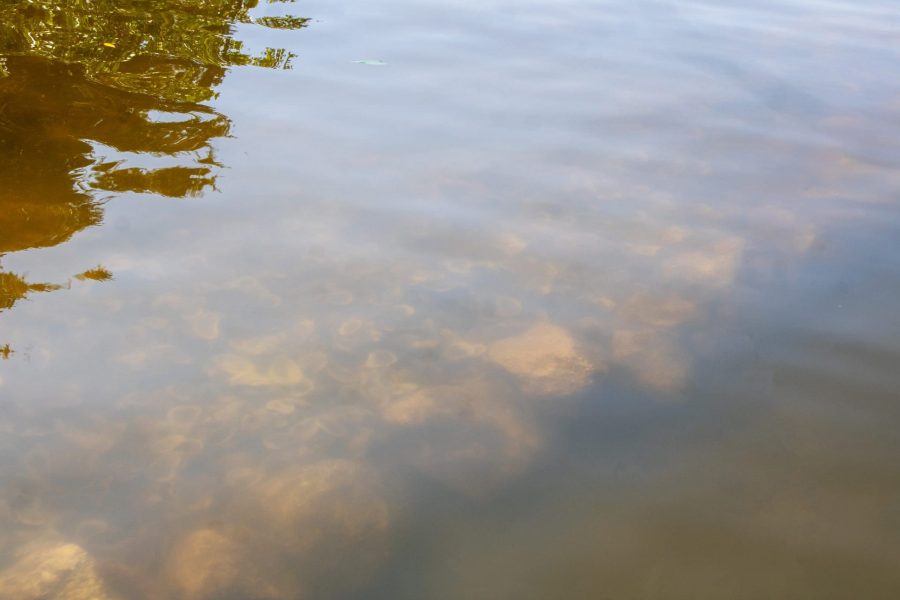Summary of Experimenting with a New Reef Building Material:
The Restore Our Shores (ROS) team is experimenting with new methods to improve the Indian River Lagoon. They have been using coquina, a natural material, for oyster reefs instead of man-made gabions. The team established six reef corrals, four using gabions and two using coquina, to see how they compare. Oysters are important for the lagoon’s health as they act as natural filters and provide habitat for other organisms. The materials for the project were sourced locally, with shells coming from local restaurants and coquina from a quarry in Titusville. The Brevard County funded the project Save Our Indian River Lagoon Project Plan, which recognizes the importance of oyster reefs in removing excess nutrients from the water.
Summary:
– The Restore Our Shores team is experimenting with a new material, coquina, for oyster reef restoration in the Indian River Lagoon.
– Coquina is a natural material sourced locally from a quarry in Titusville.
– The project aims to compare coquina reefs with gabion reefs to determine their effectiveness in oyster recruitment and water filtration.
– Oyster restoration is essential for maintaining a healthy ecosystem in the Indian River Lagoon.
– The Brevard County funds the project Save Our Indian River Lagoon Project Plan.
Our Restore Our Shores (ROS) team at Brevard Zoo is always on the lookout for new and innovative methods to improve the health of the Indian River Lagoon. Whether experimenting with seagrass planting or exploring new materials for oyster restoration projects, we are constantly striving to positively impact our local environment. We are excited to introduce coquina as a new reef-building material in our latest endeavor!
In the past, we have successfully used gabions, cages made of galvanized steel filled with oyster shells, to build oyster reefs. However, we wanted to move away from plastic materials in line with our goal of reducing plastic pollution. That’s when we came across coquina, a natural material that could be an excellent alternative.
Our experimental project involved establishing six reef corrals near the Eau Gallie River in Melbourne. Four corrals were built using gabions, while the remaining two were constructed with coquina. Each corral consisted of a border filled with gabions or limestone and a middle area filled with loose, recycled oyster shells. This setup allowed us to compare the performance of the coquina reefs with the gabion reefs.
One of the most fascinating aspects of this project is that all the materials used were sourced locally. The oyster shell came from local restaurants through our Shuck and Share program, showcasing the value of community involvement in conservation efforts. The coquina was obtained from a quarry in Titusville, highlighting the potential for sustainable sourcing within our region.
So why are oyster reefs so important for the Indian River Lagoon? Oysters are not only a delicious seafood delicacy; they play a vital role in maintaining a healthy ecosystem. Oysters act as natural filters, removing excess nutrients from the water that can fuel harmful algae blooms. By filtering the water, they help maintain the clarity necessary for seagrass and other wildlife to thrive. Oyster reefs also provide habitat for various organisms, from fish and crabs to smaller invertebrates.
The success of this project will be measured in terms of oyster recruitment and water filtration. By comparing the performance of the coquina corrals with the gabion corrals, we hope to determine the effectiveness of coquina as a reef-building material. If coquina proves to be as successful as gabions, it could be a sustainable alternative in future restoration projects.
We couldn’t undertake this exciting lagoon restoration work without the support of our partners. The Brevard County Save Our Indian River Lagoon Project Plan has funded this oyster reef project. Recognizing the importance of oyster restoration in improving water quality and protecting seagrass and wildlife, the project aligns with the goals of the Save Our Indian River Lagoon initiative.
At Brevard Zoo, we are committed to serving our community and contributing to the well-being of our local environment. As an independent, not-for-profit organization, we rely on the generosity of people like you to continue our vital animal wellness, education, and conservation programs. Your support enables us to undertake projects like this oyster reef restoration and make a tangible difference in the Indian River Lagoon and beyond.
In conclusion, the experimentation with coquina as a reef-building material showcases our dedication to finding innovative solutions for environmental restoration. With the use of locally sourced materials and the support of our partners, we are excited to see how these coquina corrals compare to their gabion neighbors. Oyster restoration is a crucial step towards maintaining a healthy and vibrant Indian River Lagoon, and projects like this bring us one step closer to achieving that goal. Join us in our efforts to restore and protect our shores, and together, we can make a lasting impact on our natural world.


